Project Tempest: Musings on Britain’s new superfighter project
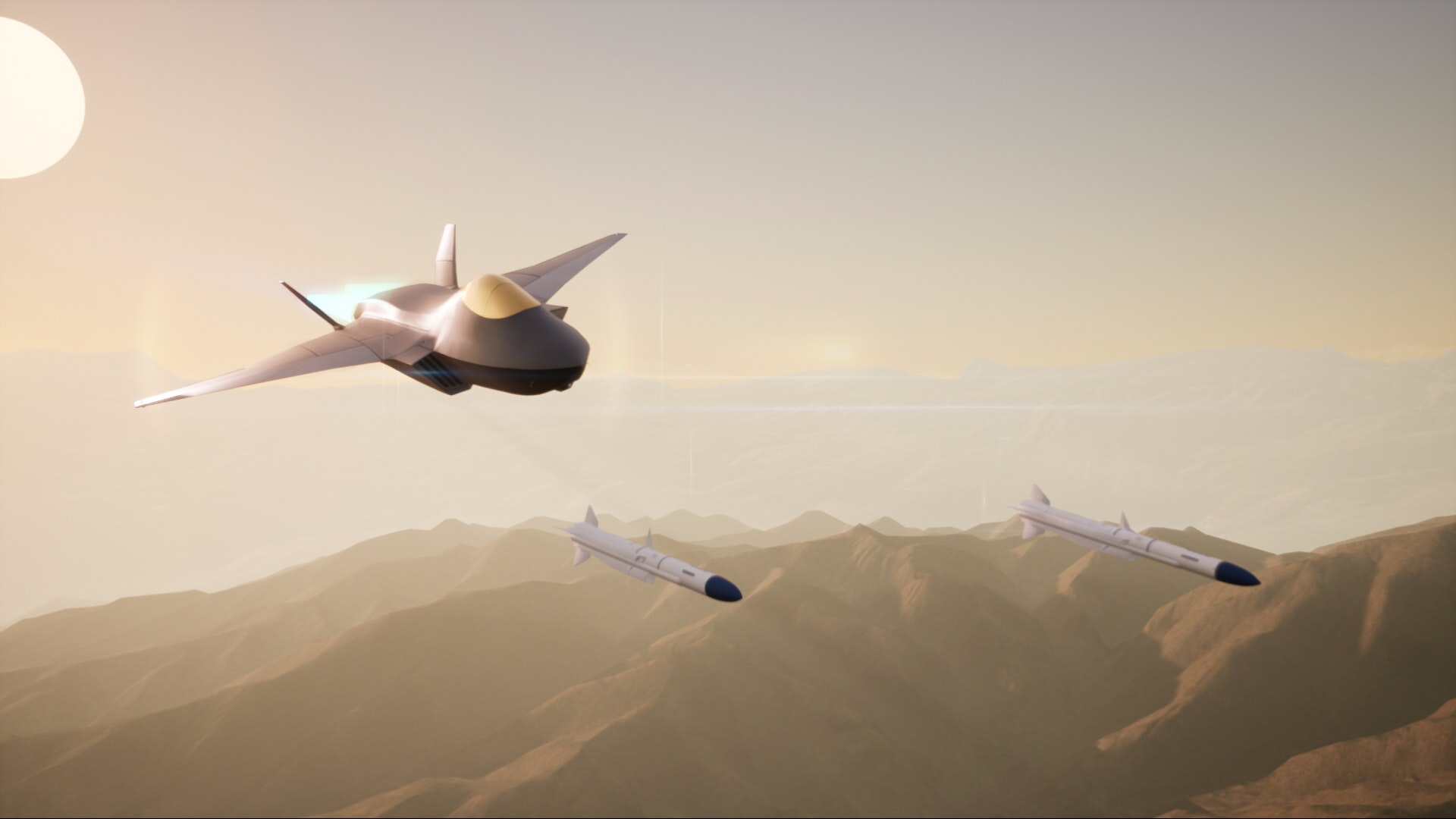
“Misery acquaints a man with strange bedfellows.”
― William Shakespeare, The Tempest
Project Tempest is a team of British and Italian companies looking for leadership of a new-generation ‘do everything’ stealth fighter. Ambitious and bold it may be, but is it a good idea — and will it actually happen?
A life-size plastic model of a stealthy fighter was unveiled at the Farnborough airshow. The model and accompanying press briefing was from a team that comprised the British Ministry of Defence, BAE Systems, European defence giant MBDA, Rolls-Royce, and the Italian company Leonardo. This was the public birth of Project Tempest, intended to develop new aircraft technologies and find partners for a future fighter project. The mock-up’s exact shape may be a placeholder, but having a physical manifestation at an airshow was a symbolically strong move, as was the name. Normally new fighter project names are a series of letters (FEFA, JSF, ACA, TFX etc.) and the use of an emotive word is a public relations coup. Following the use of other former wartime Hawker fighter names — Tornado and Typhoon — Tempest is a predictable choice. The name may also hint at the desire for this to grow into a wider pan-European collaboration. If the British defence sector wishes to stay in the fighter market (outside of its US and Turkish involvement) post-Brexit it will need to show willing, confidence and initiative — and Team Tempest is just such a move. It has been stated that BAE Systems wants leadership if such a new collaboration starts, but should it? Is Team Tempest a good idea, and will it work? Though Team Tempest is already international it is intended to be British-led. Arguments for a new British-led tactical fighter will revolve around five perceived needs: let’s have a quick look at them.
Operational requirements
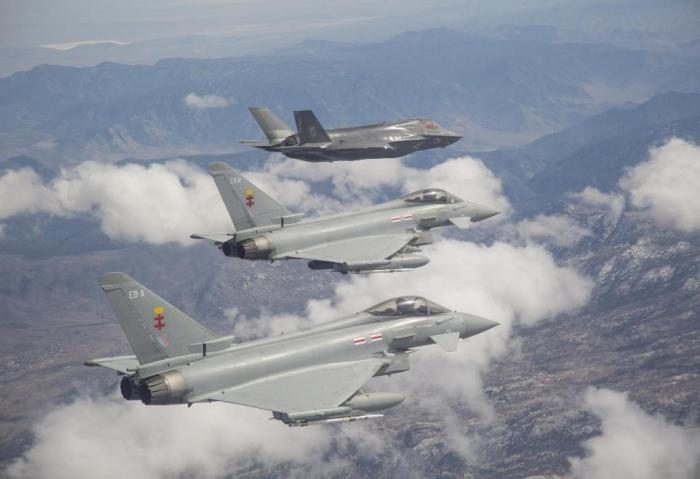
In the medium term Britain’s fast jet force will consist of F-35s and Typhoons.
The make-up of Britain’s current fighter force reveals what the RAF will need in the future. Tornado is on the way out, Typhoon is the current mainstay, and a mixed Typhoon/F-35 force represents the medium term. I have avoided mentioning FCAS and the plethora (sorry Paul Beatty) of British paper studies over the last 25 years in any detail as they’re too numerous to mention. They generally centre on a mixed force of manned and unmanned stealthy aircraft. It is likely that any fast jet would be used in conjunction with a subsonic flying wing UCAV if these don’t fall out of favour before entering service outside of the US.

The RAF’s Tornado has spent more years in combat than other type the service has operated. Next year the type is expected to be replaced by the Typhoon.
There are rumours going around that many in the RAF and MoD do not want the full 138 F-35s on order. Insiders suggest a ‘silver bullet’ force akin to USAF’s 1990s F-117 fleet is being mooted in high places. Stealth is not required for all missions, and comes at a great cost (though the F-35’s situational awareness advantage is useful for many missions). It is likely that fewer aircraft will be delivered and to protect the RAF’s independence some of these will be F-35As.
Procurement moves by the US (both F-22s and 6th Gen’ plans), Japan (with the F-3) and Turkey with the TF-X show that those who can afford an alternative don’t consider the F-35 a viable air superiority platform. This flies in the face of public announcements by Lockheed Martin, USAF and F-35 pilots regarding the aircraft’s effectiveness in the role, but it is hard to read the facts in any other way. With the Meteor long-range air-to-air missile a likely weapon for Tempest, Air Superiority, or at least a strong Swing Role capability, is likely. The RAF will need a replacement for Typhoon.

The Tempest is named after a World War II Hawker fighter-bomber. The practice of naming new European fighters after wartime Hawker fighters started with the Tornado. The Hawker Tornado is pictured.
The British military doctrine and inventory currently has little provision for the idea of fighting a powerful well-equipped enemy without assistance from the US and /or NATO.
Analysis of the design can be found here.
Sovereign technology
Having a high technology base is probably good for a nation’s economy, and many are returning to the idea of nation states above internationalism. Could high technology levels be maintained without a new fighter? British-made defensive aids and sub-systems are widely respected – featuring on the F-22, F-35 and advanced F-15s among others – so even without Tempest it is likely Britain could continue to create high-end military aerospace technology.
Though a 30-year old design, the EJ200 turbofan engine that powers the Typhoon is widely respected, with many technical observers putting Britain in the number-two slot of advanced jet producers (behind the US). In Europe, only France has the ability to create fighter engines. This technology is very hard to develop if lost, or never achieved – as evident in the experiences in China and India.
British Defence Secretary Gavin Williamson announced, “We have been a world leader in the combat air sector for a century, with an enviable array of skills and technology, and this Strategy makes clear that we are determined to make sure it stays that way…British defence industry is a huge contributor to UK prosperity, creating thousands of jobs in a thriving advanced manufacturing sector, and generating a UK sovereign capability that is the best in the world.. Today’s news leaves industry, our military, the country and our allies in no doubt that the UK will be flying high in the combat air sector as we move into the next generation.”
Britain’s global position
Historian David Edgerton noted in conversation with Hush-Kit, “It is not historical destiny which makes the British warlike, but particular political and military programmes of the recent past. So I would say that in the early twentieth century the United Kingdom was more warlike than myth suggested, much more so, but it is only in recent years that we have had a gleeful indulgence in military adventurism overseas. The United Kingdom did once have a major world role, now it just pretends to. It is now really a big Canada, but political leaders want to see themselves at the head of a small United States.” This bloated self-perception sometimes leads to Britain going it alone on military procurement programmes its smallish domestic market cannot justify. This can lead to a higher unit price, which leads to a lack of export success, which in turn keeps the unit price high. With this in mind partners are needed.
Public confidence
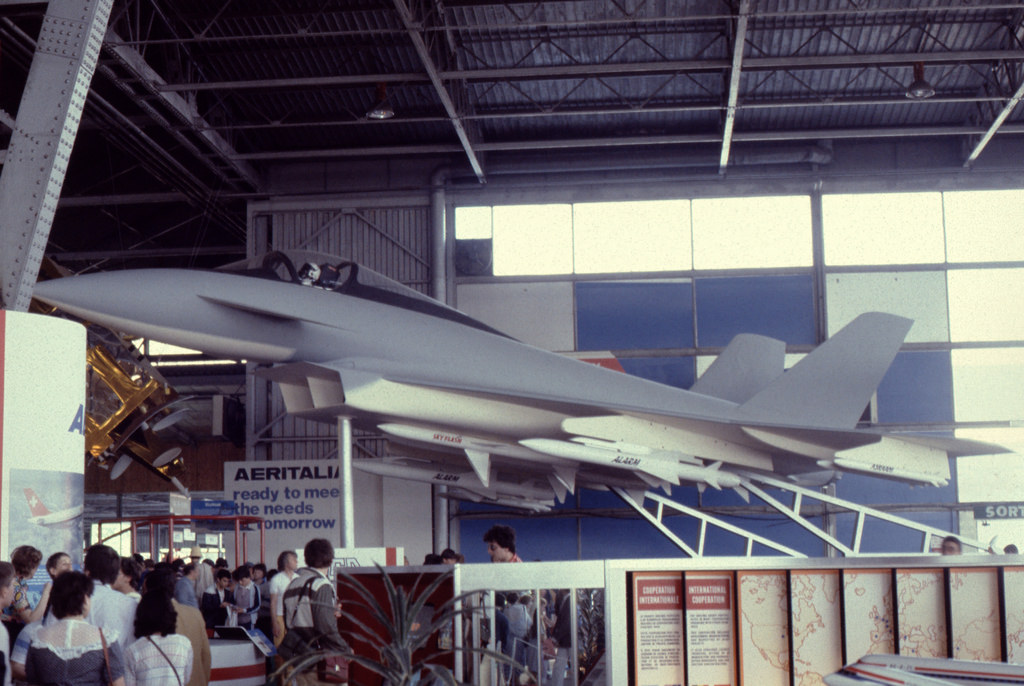
Life-sized models or mock-ups of aircraft are often used to drum up support for potential aircraft. This British Aerospace / Aeritalia / MBB Agile Combat Aircraft model was displayed at the 1983 Paris Air Show in support of the nascent Typhoon.


Divided by politics, losing support from its European friends, and tied to an increasingly erratic US, Britain needs a shot in the arm. Ambitious military equipment projects are popular with large sections of the public and demonstrate confidence in the future. To others the idea will seem wasteful, irrelevant and unlikely to come to fruition. Some may point out that huge national problems, like the record homelessness epidemic, are more pressing than billion-pound plastic planes (though the £2billion figure has been earmarked for several years).
Does BAE Systems deserve the gig?
BAE Systems sells more to the US Department of Defense (DOD) than the UK MoD, and needs to keep a cordial relationship with the US. It currently has a 13-15% workshare of each F-35 Lightning made* — so aggressively pursuing export sales at the expense of British or European needs is not at the top of its agenda. It also has pretty lamentable track record — other than the Hawk trainer, the last new military aircraft project it led was the disastrous Nimrod MRA.4. Before that the British Harrier GR.5 lagged behind its US brother the AV-8B; the AV-8B served with distinction in Desert Storm, whereas the British GR.5 was considered too immature to deploy. BAE Systems is good at high technology, has an exceptionally large portfolio and is world-class. That the F-22 and the highest spec F-15s carry BAE Systems tech is testament to this. In short, BAE Systems could do it, but it would probably be slow and expensive.
(*While BAE Systems claims a 13-15% workshare on the F-35 on their website, the F-35 site says the total British workshare (from all British companies) is 15%. We spoke to BAE Systems who commented “To clear it up, 15% is the correct number for all British industry, whereas 13-15% is BAE Systems globally, including our businesses in the US and Australia. Numbers differ depending if you include propulsion.”)
Analysis of the design can be found here.
Employment
Military aircraft design and production workforces are very vulnerable. BAE has frequently cut or threatened to cut staff when aircraft do not sell well — the Typhoon being a case in point. As an employment-creation scheme, the military aviation sector is very expensive, and demonstrably unstable.
Development
A 2035 in-service date seems unlikely, with fighters outside of China and Sweden taking about 25 years from initial ideas to frontline service. If all went well and Tempest followed this pattern, we would be looking at 2043 as the earliest in-service date.
Concept
Technologically, the watchword is ‘Everything’! A feast of exotic technologies discussed include disruptive energy weapons, stealth, virtual cockpits,variable cycle engines, hypersonic missiles, thrust-vectoring control, massive onboard electrical power generation, sensors operating in weird bandwidths, and optionally manned. This is a vision of ambition. So far, the only air forces to have indigenous stealth fighters in service are the US and China. The ‘optionally manned’ feature of Project Tempest has raised a few eyebrows, with many experts seeing it as path to getting the worst of both worlds.
Claims that Team Tempest will use new ideas to move quickly and affordably are reminiscent of early JSF talk, when the F-35 was predicted to cost $28 million a unit thanks to an innovative contract type, and design and manufacturing techniques (in 2018 the F-35 project is now celebrating some models’ price tags going under 100 million, which even allowing for time and inflation puts it into a different category from the low-cost aircraft it was originally supposed to be).
Conclusion
Britain, the black sheep of Europe, will struggle to find a willing team with its neighbours. France, has always prioritised autonomy and design leadership, and Germany is the least militaristic of the major European players. Franco-German concepts for a Future Combat Air System for Europe (below) have been notable by their exclusion of UK involvement, something that has alarmed BAE Systems no end. When things were easier for military projects Europe (and NATO) still struggled to unite on common procurement programmes. The 1980s offered a perfect storm for the development of a new fighter: a relatively strife-free EU, a tangible advanced threat, and much larger orders (Britain originally wanted 250 Typhoons). Even in these fertile conditions, the effort that led to Typhoon was a struggle, so looking further afield for partners is likely.
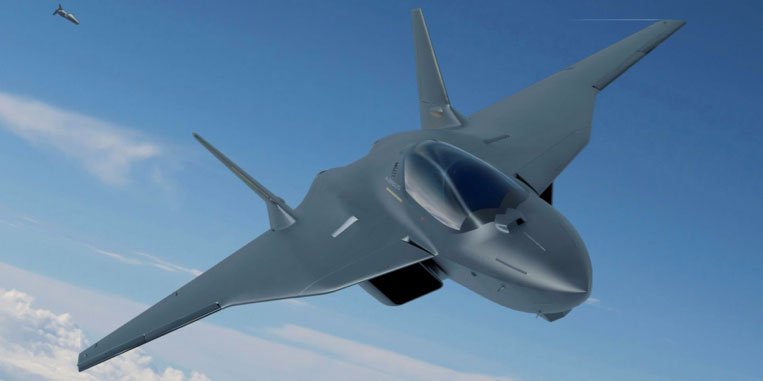
The Swedish firm Saab is the most successful manufacturer of fighter aircraft in terms of achieving – or coming closest to – predicted schedules and budgets, and its model could be one to follow.
Typhoon and Tornado suffered from an overly democratic concept-definition process, whereby compromise was put ahead of overall effectiveness. Attempts at fairness in design-sharing and production allocation led to some odd decisions (such as Germany leading the flight control system for Typhoon and a cumbersome and expensive production line). The arrangement of Eurofighter made upgrades slow and tortuous, and left the consortium little room for initiative.
The bright news for a new fighter programme is the multitude of nations, including Turkey, Japan and South Korea, desiring fighters of their own and open to collaboration. A prime contributing factor in this worldwide trend for indigenous fighters is the absence of an exportable F-15 replacement. While updated F-15s, F/A-18s, Eurocanards and late F-16s are impressive, in the long term there are no high-end Air Superiority fighters available for Western friendly nations.
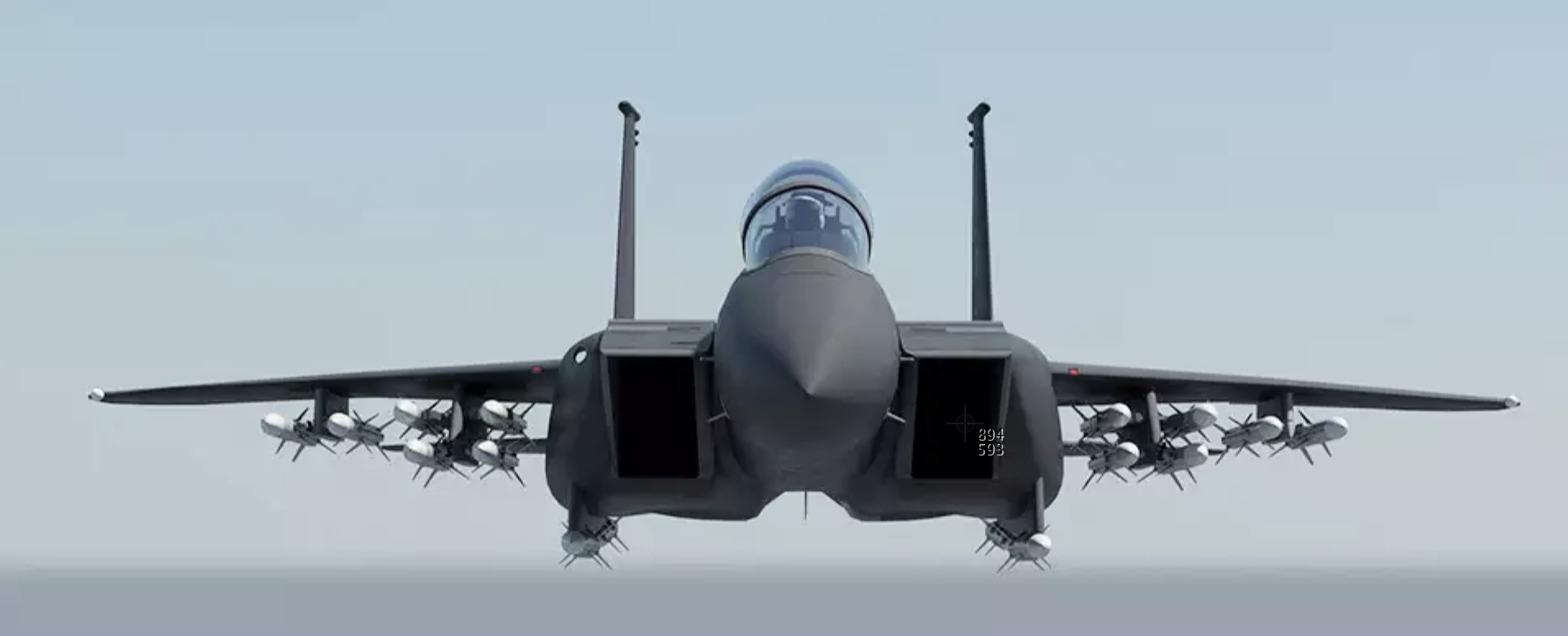
With no exportable or ongoing F-15 replacement in sight, Boeing has offered a series of upgraded F-15 models, including this – the F-15X.
Is project Tempest a serious thing, or an attempt by a nation on the back foot to appear confident? Time will tell.
Want more of this? SAVE THIS SITE! If you have enjoyed this, please do consider donating to keep us going.
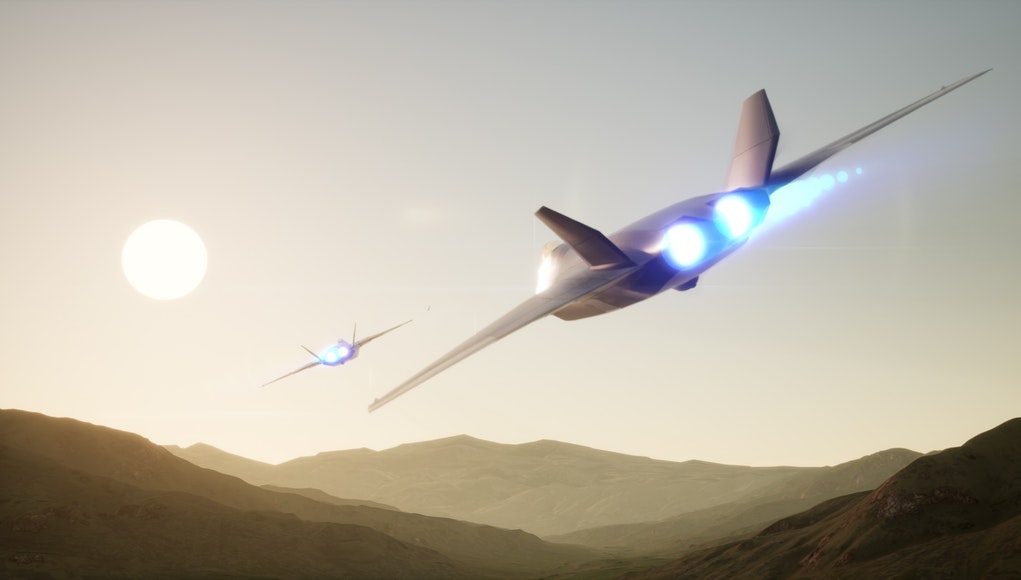

I imagine not being totally dependent on a recently-unreliable America for future armaments is also a motivation.
No doubt there will be many changes to the design before the definitive version goes into production. There will inevitably be pressure to find cost and weight savings when some features turn out to be heavier and/or more expensive than expected, so I’d be very surprised if “optionally manned” makes the final cut. Whether it will be definitely manned or definitely unmanned will depend on how far the technology of autonomous control systems has advanced by the time that decision is made.
But the future of this project – and so much else – depends on what form Brexit actually takes. If the government is mad enough to choose a “no deal” Brexit then we can expect a major economic crisis. This will put enormous pressure on public spending as unemployment sharply rises while tax receipts sharply fall, which in turn means that many large military procurement programmes will be postponed, curtailed or cancelled. The need for a new fighter will not disappear, but the money to lead a development programme instead of joining an existing project or buying something off the shelf will no longer be available.
Perhaps that’s an idea for a future article. In the event of a “no deal” economic crisis, which parts of the defence budget are most likely to be cut?
Still stirring the project fear pot are you? I just checked the UK pound V Euro . Its roughly were it was in 2014, everyone is down compared to US dollar. Thats what currencies do.
The £ is currently 1,12€ – that is an all-time-low, but hey: Follow the brexit bandwagon, right?
The UK can’t even afford enough F35 to equip one aircraft carrier… The pound suffers from a constant value loss of 15 to 20% and each single time the UK government hints at a hard brexit, the pound drops further (just ask Mr. Osborne…).
And is it already forgotten how the F136 development worked out? 2.X billion pound spent for nothing. RR does not secure participation.
In short: BAE will produce NOTHING.
Germany cant even afford to keep their major ships/subs and aircraft flying. The French are welcome to have them as a partner, not that they have much money to spread around either. Dassault has the smarts , so good luck to them
Germany currently builds up 27 additional battalions and is correcting the defect support cpntracts of the past 15 years.
Germany has the €€€, GB has no £££ – that’s the difference 😉
27 additional battalions ? No evidence of that or the spending that will require. Not that evidence features in your other posts
“Bartels[The German parliament’s military commissioner] pointed to “big gaps” in personnel and equipment. At the end of 2017, no submarines and none of the air force’s 14 large transport planes were available for deployment due to repairs.
Soldiers have experienced increasing levels of stress and there was a lack adequate leadership due to some 21,000 vacant officer posts.”
They dont need new battalions, just fill the manpower gaps in units they have, and fund the maintenance. As if they have the euros for a new combat plane .LOL They were the foot draggers over the introduction of the Typhoon in the late 90s-early 2000s. The French are welcome to build the Airbus fighter jet. The Italians and the Spanish will stick with the Brits who may bring Japan on board.
“http://www.faz.net/aktuell/politik/inland/verteidigungsministerium-will-heer-umstrukturieren-14960534.html” Since you don´t speak German, you won´t understand it. Whatever, I do 😉
You see: What you stated is just the problem assessment, not the solution. As I said, the insufficient maintenance contracts will be altered.
By 2024, we are required to adapt our defence budget to 2% of our GDP. That are by then approx. 85 billion € (>90 billion $)… And we don´t have to maintain expensive nuclear weapons (the UK does this, however, it still does not possess an independent deterrent, since it needs Trident II missiles from US stockpiles, which may not be delivered under ALL circumstances, like in case of a russophile president…).
All in all, Germany stands up to the desire of its NATO and EU allies to make comprehensive contributions to the common defence, like the EU defence union (which the UK will likely join soon aswell) or NATO joint operations.
The UK is just not credible in the long run, since it does not possess the economic or financial background for such armed forces. The RN won´t be fully equipped with credible friages (Type 31e), the AAW destroyers are incompletely armed, the QE class can carry more than 40 jets, but will see 24 F-35 max., the Prince of Wales won´t be in serious service, the RAF will simply fall short of fighter airframes in a few years when batch I Typhoons leave service due to budgetary shortcuts, the financialization of all F-38 beyond number 48 is uncertain, the Challenger uprades won´t include the necessary implementation of a new propulsion, gearbox and gun (smoothbore L/55 of Rheinmetall), there is still no replacement for the L-85 and I could go on and on and on…
Before claiming British grandness, the UK should first make a serious assessment of its own standing and capabilities.
It almost lost a war against Argentinia in the early 80´s with more ships of its own involved than it currently has or will have and lost 3 “wars” (rather conflicts) against Iceland, because the US said “sit down little Brit”, just like in 1956…
AndrewZ is completely right and I would go even further: The UK does not possess the ability to build a fighter by any means.
“http://www.faz.net/aktuell/politik/inland/verteidigungsministerium-will-heer-umstrukturieren-14960534.html” Since you don´t speak German, you won´t understand it. Whatever, I do 😉
Whither the Swedes potentially in all this? and the Turks, given BAe involvement in their project?
The article and some of the comments are utterly defeatist. Why?
This move by the MoD and industry is very welcome. It is a declaration of ambition, nothing more or less. We do much in aerospace that is good and sometimes much more than good. But let us talk ourselves down rather than wait for our competitors to do it for us.
Incidentally, there would be no ‘Europe’ as it exists today had it not been for this black sheep ridden little island. Go and look at the war graves in France, Belgium, Italy, Greece, etc., etc.
The word ‘defeatist’ assumes I think it’s a good idea.
And the UK believed in its own grandness, although there is no empire anymore, although it is no economic powerhouse anymore, no military power, nothing of that kind. Large in Europe, small in the world. Even Australia, NZ and Canada prefer trade with China, the EU or the US.
The kingdom participated in Europe, yet internally, all which was reported was how evil the Europeans are, because they don’t give the Brits every lollipop they demand… 30 years of British discount, but not a single word of appreciation.
The last aircraft the UK produced on themselves was the Hawk and that’s a trainer. After the 70’s, fighters becaume too complex for single development.